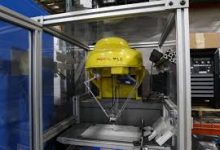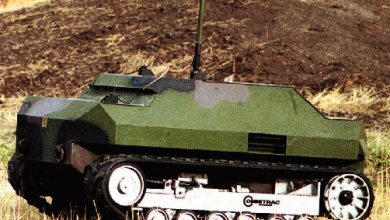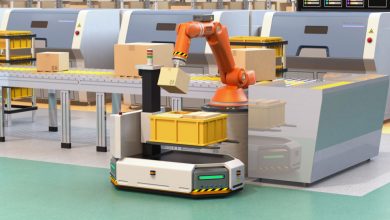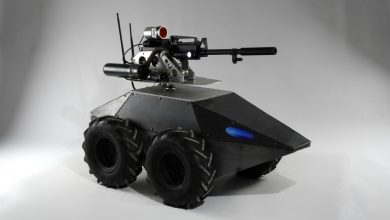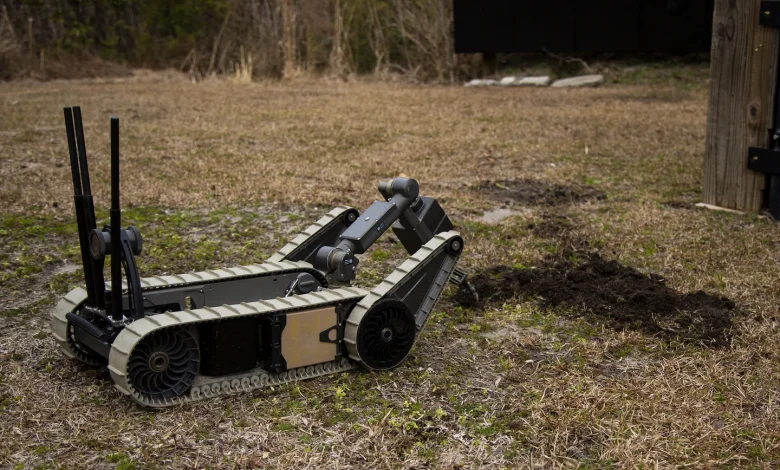
Introduction:
Mine clearance is a vital but hazardous task that often involves painstakingly identifying and neutralizing explosive devices left over from past conflicts or laid deliberately as traps. Traditionally, this task has been carried out by human deminers, risking their lives in the process. However, the advent of mine clearance robotics has revolutionized this field, offering safer, more efficient, and cost-effective solutions to a longstanding global problem. In this article, we delve into the world of mine clearance robotics, exploring its evolution, current state-of-the-art technologies, challenges, and the potential it holds for the future.
Evolution of Mine Clearance Robotics:
The development of mine clearance robotics can be traced back to the late 20th century when the need for safer demining methods became increasingly apparent. Early robotic systems were rudimentary, lacking the sophistication and capabilities of modern counterparts. These early attempts primarily focused on remote-controlled machines that could detect mines using metal detectors and subsequently destroy them using controlled detonations. As technology progressed, so did the capabilities of mine clearance robotics. Today, these machines employ a diverse range of advanced sensors, including ground-penetrating radar, infrared imaging, and chemical sniffers, to detect and classify mines with unprecedented accuracy. Moreover, modern robotics platforms boast enhanced mobility, allowing them to navigate challenging terrains, including rugged landscapes and dense vegetation, where mines are often hidden.
Evolution of Mine Clearance Robotics: From Remote Control to Autonomous Precision
Introduction:
The evolution of mine clearance robotics marks a transformative journey from manual, risky demining operations to sophisticated, autonomous systems capable of navigating complex terrains and detecting explosive threats with unprecedented accuracy. This article delves into the chronological progression of mine clearance robotics, highlighting key milestones, technological advancements, and the impact these innovations have had on the safety and efficacy of mine clearance operations worldwide.
Early Endeavors: Remote-Controlled Machines:
The earliest attempts at mechanizing mine clearance can be traced back to the late 20th century when remote-controlled machines were introduced to mitigate the dangers posed to human deminers. These early robots, while rudimentary by today’s standards, laid the foundation for subsequent advancements in the field. Equipped with basic sensors and manipulator arms, these machines relied on human operators to remotely control their movements and perform mine detection and neutralization tasks. While they provided a degree of safety by reducing direct human exposure to explosive hazards, their effectiveness was limited by their reliance on manual control and relatively simplistic sensor technology.
Technological Advancements: Sensing and Mobility:
The turn of the 21st century witnessed a significant leap forward in mine clearance robotics, driven by rapid advancements in sensing, computing, and mobility technologies. Ground-penetrating radar, infrared imaging, and chemical sensors emerged as key tools for detecting buried mines with greater precision and reliability. These sensors, when integrated into robotic platforms, enabled autonomous or semi-autonomous mine detection capabilities, reducing the need for constant human intervention. Moreover, improvements in mobility systems allowed robots to traverse challenging terrains, including rugged landscapes, dense vegetation, and urban environments, where mines are often hidden. Wheeled, tracked, and legged robotic platforms emerged, each tailored to specific operational requirements and environmental conditions. The advent of modular and reconfigurable robotic systems further enhanced adaptability, enabling robots to customize their configurations based on the task at hand.
AI and Machine Learning: Towards Autonomous Decision-Making:
The integration of artificial intelligence (AI) and machine learning algorithms marked a significant turning point in mine clearance robotics. These technologies empowered robots to autonomously process sensor data, identify potential threats, and make informed decisions in real-time. Machine learning algorithms, trained on vast datasets of mine signatures and environmental features, enabled robots to continuously improve their detection capabilities through experience, thereby reducing false positives and increasing operational efficiency. Sensor Fusion emerged as another critical advancement, allowing robots to integrate data from multiple sensors to create a comprehensive situational awareness. By fusing data from sources such as vision, LiDAR, and electromagnetic sensors, robots could compensate for the limitations of individual sensors and enhance overall detection accuracy.
Robotic Manipulation: Safely Neutralizing Threats:
Robotic manipulation capabilities also underwent significant refinement, enabling robots to safely excavate, probe, and neutralize mines without risking human lives. Advanced robotic arms equipped with specialized tools, such as flails, tillers, and manipulator arms, enabled robots to perform intricate tasks with precision and dexterity. Furthermore, developments in teleoperation and haptic feedback systems allowed human operators to remotely supervise and intervene when necessary, ensuring safe and effective mine clearance operations.
Challenges and Future Directions:
Despite remarkable progress, mine clearance robotics still face several challenges, including false positives, terrain complexity, and cost constraints. Addressing these challenges will require continued research and innovation in areas such as sensor technology, AI, and human-robot interaction. Looking ahead, the future of mine clearance robotics holds tremendous promise. Emerging technologies such as swarm robotics, miniaturization, and human-robot collaboration are poised to further enhance the safety, efficiency, and accessibility of mine clearance operations. By leveraging the collective intelligence of multiple robots, navigating confined spaces with agility, and combining the strengths of human intuition and robotic precision, the next generation of mine clearance robots will usher in a new era of safety and reliability in humanitarian demining efforts worldwide.
Conclusion:
The evolution of mine clearance robotics represents a remarkable convergence of technological innovation and humanitarian necessity. From humble beginnings as remote-controlled machines to sophisticated autonomous systems capable of navigating complex terrains and detecting explosive threats with precision, these robots have revolutionized the way landmine contamination is addressed. As research and development efforts continue to push the boundaries of what is possible, mine clearance robotics will play an increasingly vital role in safeguarding communities, restoring livelihoods, and paving the way for a safer, mine-free future.
State-of-the-Art Technologies:
Several cutting-edge technologies are driving the advancement of mine clearance robotics:
Artificial Intelligence (AI):
AI algorithms play a crucial role in enabling robots to autonomously process sensor data, identify potential threats, and make informed decisions in real-time. Machine learning algorithms, in particular, enable robots to adapt and improve their mine detection capabilities through experience.
Artificial Intelligence Revolutionizing Mine Clearance Robotics: Enhancing Safety and Efficiency
Introduction:
In the realm of mine clearance, the integration of Artificial Intelligence (AI) into robotics has emerged as a game-changer, offering a potent blend of advanced algorithms, sensor fusion, and autonomous decision-making capabilities. This article explores the pivotal role of AI in transforming mine clearance robotics, from enhancing detection accuracy to enabling autonomous navigation and manipulation of hazardous environments.
AI-Powered Sensing:
One of the primary contributions of AI in mine clearance robotics is its ability to revolutionize sensing capabilities. Traditional sensors, such as ground-penetrating radar and metal detectors, have been augmented and optimized through AI algorithms to discriminate between harmless clutter and potential threats with unprecedented accuracy. Machine learning techniques, including deep neural networks, enable robots to learn from vast datasets of sensor readings, allowing them to distinguish between various types of mines and environmental clutter. As a result, false positives are significantly reduced, enhancing operational efficiency and reducing the risk to human operators.
Sensor Fusion:
AI facilitates the integration and fusion of diverse sensor modalities, such as vision, LiDAR, and chemical sniffers, into a unified perceptual framework. By combining data from multiple sensors, robots can create a comprehensive situational awareness of their surroundings, enabling them to detect mines hidden beneath different types of terrain and camouflage. Sensor fusion techniques leverage AI algorithms to synergistically combine information from complementary sensors, compensating for individual sensor limitations and enhancing overall detection capabilities. This multidimensional approach to sensing not only improves detection accuracy but also provides valuable contextual information for autonomous decision-making.
Autonomous Decision-Making:
AI enables mine clearance robots to autonomously process sensor data, analyze environmental features, and make informed decisions in real-time. Through advanced algorithms such as reinforcement learning and probabilistic reasoning, robots can navigate complex terrains, plan optimal paths, and adapt to dynamic environments while avoiding obstacles and minimizing the risk of detonating mines. Autonomous decision-making capabilities empower robots to operate with minimal human intervention, reducing the reliance on remote control and enabling more efficient clearance operations. Moreover, AI algorithms can prioritize areas of interest based on factors such as terrain characteristics, historical conflict data, and demographic information, optimizing resource allocation and maximizing clearance effectiveness.
Robotic Manipulation and Interaction:
AI-driven robotic manipulation plays a crucial role in safely neutralizing detected threats. Advanced robotic arms equipped with specialized tools, such as flails, tillers, and manipulator arms, enable robots to excavate, probe, and neutralize mines with precision and dexterity. AI algorithms facilitate teleoperation and haptic feedback systems, allowing human operators to remotely supervise and intervene when necessary, ensuring safe and effective mine clearance operations. Moreover, AI-powered human-robot interaction enables seamless collaboration between human deminers and robotic systems, leveraging the strengths of both to enhance overall clearance efficiency and safety.
Challenges and Future Directions:
While AI has significantly advanced the capabilities of mine clearance robotics, several challenges remain. These include adapting AI algorithms to diverse environmental conditions, mitigating the risk of adversarial attacks on sensing systems, and addressing ethical considerations surrounding autonomous decision-making in hazardous environments. Overcoming these challenges will require continued research and collaboration across disciplines, including robotics, computer vision, machine learning, and human factors engineering. Looking ahead, the future of AI in mine clearance robotics holds immense promise. Emerging technologies such as swarm robotics, distributed sensing networks, and cognitive architectures are poised to further enhance the safety, efficiency, and scalability of mine clearance operations. By harnessing the power of AI to augment human expertise and automate repetitive tasks, mine clearance robots will continue to play a pivotal role in safeguarding communities, restoring livelihoods, and mitigating the impact of landmine contamination worldwide.
Conclusion:
Artificial Intelligence has ushered in a new era of innovation and progress in the field of mine clearance robotics. By leveraging advanced algorithms, sensor fusion techniques, and autonomous decision-making capabilities, AI-powered robots are revolutionizing the way landmine contamination is addressed. As AI continues to evolve and mature, the potential for further advancements in mine clearance robotics is virtually limitless. With ongoing research and development efforts, AI-driven mine clearance systems will play an increasingly vital role in saving lives, preserving livelihoods, and building a safer, mine-free world for future generations.
Sensor Fusion:
Mine clearance robots integrate multiple sensor modalities, such as vision, LiDAR, and electromagnetic sensors, to create a comprehensive picture of the environment. By fusing data from different sensors, these robots can compensate for the limitations of individual sensors and improve overall detection accuracy.
Remote Operation:
While autonomous operation is desirable, many mine clearance robots also support remote operation by human operators. This allows for human oversight and intervention when necessary, particularly in complex or uncertain scenarios.
Robotic Manipulation:
Advanced robotic arms equipped with specialized tools, such as flails, tillers, and manipulator arms, enable robots to safely excavate, probe, and neutralize mines without risking human lives.
Challenges and Limitations:
Despite significant progress, mine clearance robotics still face several challenges:
Mine clearance robotics have emerged as a promising solution to one of the most pressing global challenges: the removal of landmines and unexploded ordnance (UXO) from conflict-affected regions. While these robots offer significant advantages over traditional manual demining methods, they also face numerous challenges and limitations that must be addressed to ensure their effectiveness and safety.
Terrain and Environment:
One of the primary challenges faced by mine clearance robotics is navigating complex and varied terrain. Landmines can be buried in diverse environments, including forests, deserts, marshlands, and urban areas. Robots must be able to traverse these terrains safely and effectively while accurately detecting and neutralizing mines. Uneven terrain, vegetation, debris, and other obstacles can impede robot movement and sensor performance, posing significant challenges to mine clearance operations.
Detection Accuracy:
While advancements in sensor technology have improved the detection capabilities of mine clearance robots, achieving high levels of accuracy remains a challenge. False positives and false negatives can occur due to environmental factors such as soil composition, moisture levels, and electromagnetic interference. Additionally, some mines may be constructed from non-metallic materials or have low metal content, making them difficult to detect with traditional metal detectors. Enhancing the accuracy and reliability of detection systems is essential for minimizing the risk of missed mines or inadvertent detonations.
Adaptability and Versatility:
Mine clearance robots must be adaptable to different types of mines and UXO, as well as changing environmental conditions. Designing robots that can accommodate various payloads, sensors, and tools allows for versatility in addressing different clearance tasks. However, developing multi-purpose robots that are both effective and cost-efficient remains a significant challenge. Balancing the need for specialized equipment with the practicality of a single platform requires careful consideration of design trade-offs and operational requirements.
Safety and Reliability:
Ensuring the safety of both operators and civilians is paramount in mine clearance operations. Robots must be reliable and robust enough to withstand the rigors of field use without compromising their effectiveness or safety. Malfunctions or breakdowns during operation can result in delays or disruptions to clearance efforts, as well as potential safety hazards. Implementing comprehensive testing and quality control measures during the development and deployment phases is critical for mitigating these risks and enhancing the reliability of mine clearance robotics.
Cost and Accessibility:
While the initial investment in mine clearance robotics can be significant, ongoing operational costs, maintenance, and support services must also be considered. Limited funding and resources may constrain the adoption of robotics in mine clearance operations, particularly in low-income countries or regions with extensive contamination. Additionally, the accessibility of technology and expertise required for robotics development and deployment may be limited in some contexts, further exacerbating disparities in mine clearance capacity.
Regulatory and Ethical Considerations:
Mine clearance operations are subject to various regulatory frameworks and ethical considerations, which may impact the use of robotics in certain contexts. Legal restrictions on the use of autonomous systems, concerns about civilian casualties, and ethical dilemmas surrounding human-robot interaction are among the factors that must be addressed. Ensuring compliance with international humanitarian law, human rights standards, and ethical principles is essential for the responsible deployment of mine clearance robotics. Despite these challenges and limitations, mine clearance robotics hold tremendous potential for improving the efficiency, safety, and effectiveness of demining efforts worldwide. Continued research and development efforts aimed at addressing these challenges, as well as collaboration between governments, international organizations, and the private sector, are essential for advancing the field of mine clearance robotics and saving lives in conflict-affected regions. By overcoming these obstacles, robotics can play a crucial role in achieving the goal of a mine-free world.
False Positives:
The high sensitivity of mine detection sensors can result in false positives, where harmless objects are mistakenly identified as mines. This can slow down clearance operations and increase the risk to human operators.
Terrain Complexity:
Navigating complex terrains, such as urban environments or dense vegetation, remains a significant challenge for mine clearance robots. Developing robust locomotion systems capable of traversing diverse landscapes is essential for expanding the applicability of these robots.
Cost and Accessibility:
While robotics technology continues to advance, the high cost of sophisticated robotic systems can be prohibitive for many mine clearance organizations, particularly those operating in resource-constrained environments.
Future Prospects:
Despite the challenges, the future of mine clearance robotics looks promising:
Swarm Robotics:
Swarm robotics, which involves coordinating large numbers of simple robots to accomplish complex tasks, holds great potential for accelerating mine clearance operations. By leveraging the collective intelligence and cooperation of multiple robots, swarm systems can cover larger areas more efficiently and effectively.
Miniaturization:
Continued advancements in miniaturization technology will enable the development of smaller, more agile robots capable of accessing confined spaces and navigating challenging terrains with greater ease.
Human-Robot Collaboration:
Future mine clearance operations are likely to involve closer collaboration between human deminers and robotic systems. By combining the strengths of both humans and robots, such as human intuition and robotic precision, clearance operations can be conducted more safely and efficiently. Human-robot collaboration in mine clearance robotics represents a paradigm shift in how we approach the complex task of landmine and unexploded ordnance (UXO) clearance. By combining the strengths of human expertise and ingenuity with the capabilities of advanced robotic systems, collaborative approaches hold the potential to enhance the efficiency, safety, and effectiveness of demining operations worldwide. Here’s an in-depth exploration of this fascinating topic:
Complementary Skills and Expertise:
Human-robot collaboration capitalizes on the unique strengths and capabilities of both humans and robots. Humans possess cognitive abilities such as perception, judgment, and decision-making, which are essential for interpreting complex environments, analyzing data, and making strategic decisions. Robots, on the other hand, excel in tasks that are repetitive, hazardous, or physically demanding, such as traversing rough terrain, detecting mines, and performing controlled detonations. By leveraging the complementary skills and expertise of humans and robots, collaborative approaches can overcome the limitations of either alone, leading to more efficient and reliable mine clearance operations.
Shared Autonomy and Control:
In collaborative mine clearance robotics, humans and robots work together in a shared autonomy framework, where control and decision-making responsibilities are distributed between human operators and autonomous or semi-autonomous robotic systems. Human operators provide high-level guidance, supervision, and intervention when necessary, while robots perform low-level tasks autonomously, such as mine detection, mapping, and clearance. This division of labor allows humans to focus on strategic planning, risk assessment, and situational awareness, while robots handle the repetitive and labor-intensive aspects of demining.
Enhanced Situational Awareness:
Collaborative mine clearance robotics enable human operators to access real-time data, sensor feeds, and situational awareness information from robotic systems deployed in the field. Advanced sensors, cameras, and other monitoring devices mounted on robots provide valuable insights into the operational environment, including terrain conditions, mine locations, and potential hazards. This enhanced situational awareness allows human operators to make informed decisions, adapt to changing circumstances, and prioritize clearance tasks effectively, ultimately improving the safety and efficiency of demining operations.
Training and Capacity Building:
Human-robot collaboration in mine clearance robotics offers opportunities for training, capacity building, and knowledge transfer within demining organizations and communities. By involving human operators in the development, deployment, and operation of robotic systems, collaborative approaches facilitate skill development, experience sharing, and best practices dissemination. Training programs can educate operators on how to effectively interface with robotic platforms, interpret sensor data, and coordinate collaborative tasks, thereby enhancing their proficiency and confidence in using advanced technologies for mine clearance.
Ethical and Legal Considerations:
Collaborative mine clearance robotics raise important ethical and legal considerations related to human-robot interaction, accountability, and responsibility. Human operators retain ultimate authority and decision-making power over robotic systems, particularly in situations involving potential risks to human life or property. Clear protocols, guidelines, and standard operating procedures must be established to ensure the ethical and responsible use of robotics in mine clearance operations, with adherence to international humanitarian law, human rights principles, and safety standards.
Research and Innovation:
Continued research and innovation are essential for advancing the field of human-robot collaboration in mine clearance robotics. Interdisciplinary collaborations between robotics engineers, computer scientists, demining experts, and social scientists can drive innovation in robot design, sensor technology, artificial intelligence, and human-robot interaction. Key areas of research include improving robot autonomy, sensor performance, data fusion techniques, and user interface design to enhance the effectiveness and usability of collaborative systems in real-world demining scenarios. Overall, human-robot collaboration holds tremendous promise for revolutionizing mine clearance operations and accelerating progress towards a mine-free world. By harnessing the complementary strengths of humans and robots, collaborative approaches can overcome the challenges and limitations of traditional demining methods, saving lives, restoring land, and promoting peace and security in conflict-affected regions. As technology continues to evolve and capabilities expand, collaborative mine clearance robotics will play an increasingly critical role in humanitarian mine action efforts worldwide.
Conclusion:
Mine clearance robotics represent a significant leap forward in addressing the global challenge of landmine contamination. By leveraging advanced technologies such as AI, sensor fusion, and robotic manipulation, these systems offer safer, more efficient, and cost-effective solutions for detecting and neutralizing explosive hazards. While challenges remain, ongoing research and development efforts are poised to further enhance the capabilities of mine clearance robotics, paving the way for a safer and mine-free future.

